 Weird Stuff
Weird Stuff  Weird Stuff
Weird Stuff  Our World
Our World 10 Ways Your Christmas Tree Is More Lit Than You Think
 Movies and TV
Movies and TV The 10 Coolest Stars to Set Sail on The Love Boat
 History
History 10 Things You Didn’t Know About the American National Anthem
 Technology
Technology Top 10 Everyday Tech Buzzwords That Hide a Darker Past
 Humans
Humans 10 Everyday Human Behaviors That Are Actually Survival Instincts
 Animals
Animals 10 Animals That Humiliated and Harmed Historical Leaders
 History
History 10 Most Influential Protests in Modern History
 Creepy
Creepy 10 More Representations of Death from Myth, Legend, and Folktale
 Technology
Technology 10 Scientific Breakthroughs of 2025 That’ll Change Everything
 Weird Stuff
Weird Stuff Ten Bizarre Facts About The Doge Meme
 Our World
Our World 10 Ways Your Christmas Tree Is More Lit Than You Think
 Movies and TV
Movies and TV The 10 Coolest Stars to Set Sail on The Love Boat
Who's Behind Listverse?

Jamie Frater
Head Editor
Jamie founded Listverse due to an insatiable desire to share fascinating, obscure, and bizarre facts. He has been a guest speaker on numerous national radio and television stations and is a five time published author.
More About Us History
History 10 Things You Didn’t Know About the American National Anthem
 Technology
Technology Top 10 Everyday Tech Buzzwords That Hide a Darker Past
 Humans
Humans 10 Everyday Human Behaviors That Are Actually Survival Instincts
 Animals
Animals 10 Animals That Humiliated and Harmed Historical Leaders
 History
History 10 Most Influential Protests in Modern History
 Creepy
Creepy 10 More Representations of Death from Myth, Legend, and Folktale
 Technology
Technology 10 Scientific Breakthroughs of 2025 That’ll Change Everything
10 Royal Mistresses Who Had Their Men By The Crown Jewels
Behind every man there’s a good woman, or so the saying goes. In the case of royalty, however, there were often a few bad girls as well. Royals were expected to marry other royals, and marriages were usually pre-arranged, often when the bride and groom were still children. It’s not surprising that some kings sought their pleasure elsewhere, and they had no shortage of beautiful (and mostly willing) partners. In many cases, royal mistresses were the women kings would have married had they been given the choice; in others, they were greedy, scheming Jezebels, interested in little more than power and wealth. Who was which? We’ll let you decide.
10 Odette de Champdivers
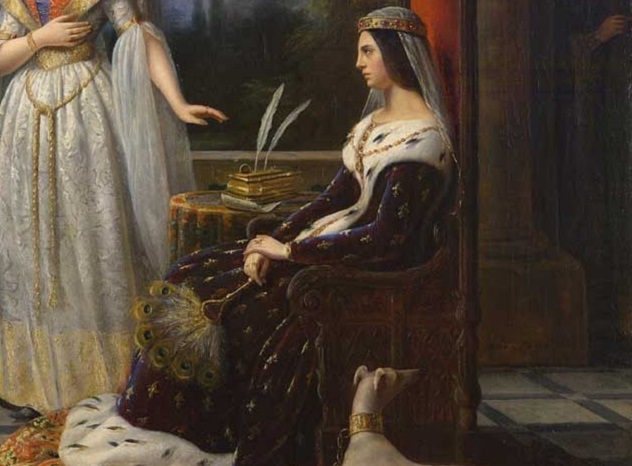
At 17, Odette de Champdivers became mistress to the mad French king, Charles VI. Charles suffered from paranoid delusions, even believing at one point that he was made of glass. During his episodes of what is now believed to be schizophrenia or bipolar disorder, he would become violent toward his queen, Isabella of Bavaria. Since medieval doctors believed that “releasing one’s seed” was necessary for good health, Isabella acquiesced to Odette, for her own protection.
Odette grew so close to the king that she earned the nickname “Little Queen” and they conceived a daughter together. Charles provided for his mistress and daughter in his will, but after his death, France was wracked by civil war. Odette was forced to earn money by becoming a spy for Charles’ son, the future Charles VII.
Much about Odette is unknown, including her final fate, but she remains a captivating historical subject. She’s been the subject of many famous paintings, as well as a historical novel by Honoré de Balzac.
9 Agnès Sorel
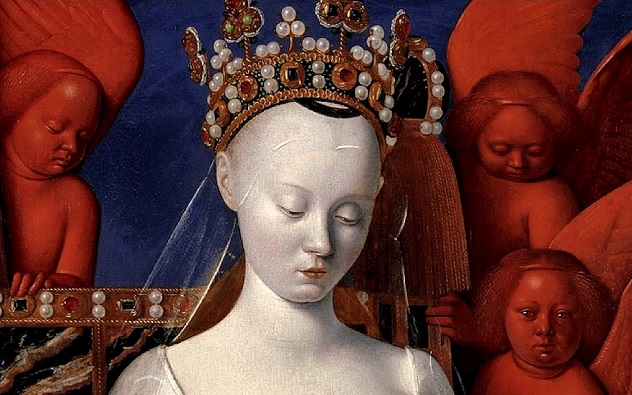
Agnès Sorel was a golden-haired, blue-eyed beauty in her early 20s when she met the 40-year-old Charles VII of France. She immediately set tongues at court wagging with her revealing dress, which one account claimed even showed her nipples.
But it wasn’t just Agnès’ clothing that upset the French nobility. Her alleged interference in political affairs (though untrue) angered them so much that when Agnés suddenly became ill and died after delivering her fourth child by the king, some believed she had been poisoned. Suspicion fell on Charles’ legitimate son, the future King Louis XI, who had been in open revolt against his father and reportedly loathed Agnès.
This theory may not be as far-fetched as once believed. A recent examination of Agnès skeleton shows that mercury poisoning may have caused her death. Mercury was a common medicine in the middle ages, so it could have been accidental.
Whatever the cause, Charles VII was distraught when Agnès’ died—but didn’t let it stop him from immediately replacing her with her 14-year old cousin, Antoinette Maignelais. Agnès is best remembered as the subject of a famous painting of the virgin and child by Charles’s court painter, Jean Fouquet, which portrays Agnès as a beautiful and fashionable Mary with one breast exposed.
8 Gabrielle d’Estrées
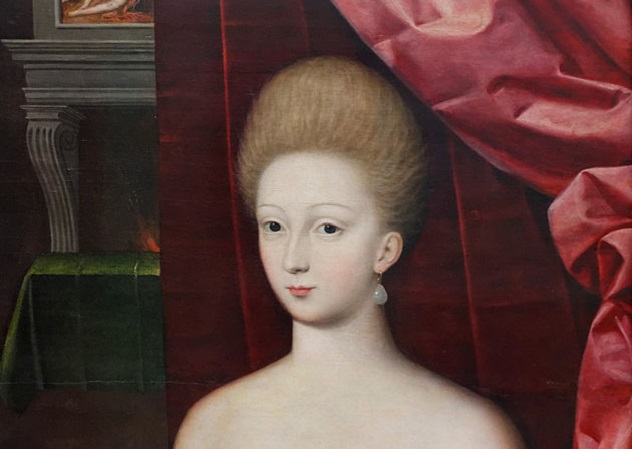
Of Henry IV of France’s 56 documented mistresses, the only one to whom he remained faithful was Gabrielle d’Estrées. Like Agnès Sorel, Gabrielle is best remembered for a famous painting, which now hangs in the Louvre, depicting Gabrielle nude in a bath with her sister.
Gabrielle is one of the rare mistresses that history records as having a positive impact on the king. She is often credited with persuading the protestant Henry to return to the Catholic Church and to issue the Edict of Nantes, which guaranteed religious freedoms to French Protestants. Gabrielle bore Henry three children, all of whom he legitimized. He even asked the Pope to annul his marriage to his estranged wife, Marguerite of Valois, so that he could marry Gabrielle.
But while Henry adored his mistress, the French nobility did not. When Gabrielle suffered an agonizing death shortly after giving birth to a stillborn son, there were many who believed she’d been poisoned. Though he never got to make his beloved Gabrielle his queen, a heartbroken Henry gave her a funeral as if she had been one.
7 Alice Perrers
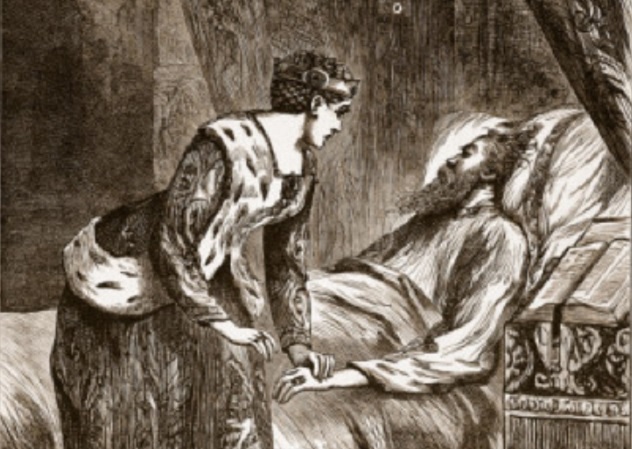
Alice Perrers was a 15-year-old lady-in-waiting to Queen Philippa when she caught the eye of Edward III, then in his 50s. When Philippa died six years later, Edward began heaping favors upon Alice and giving her gifts, which included his dead wife’s clothes and jewels.
As Edward aged, Alice’s influence grew. She sat next to him at council meetings and ensconced herself on the bench at Westminster, where she told the royal judges how they should rule. Such interference did not sit well with Parliament, who banished her from court, but Alice returned after a subsequent parliament ruled the banishment unconstitutional.
Edward died in 1377, following a stroke. Alice, it was said, waited at the king’s beside until everyone else had departed, then stole the rings from his fingers and the massive gold chain from around his neck. If true, she was never caught. She spent the remainder of her life on her estates in Essex, where she died sometime in the winter of 1400 or 1401.
6 Barbara Villiers
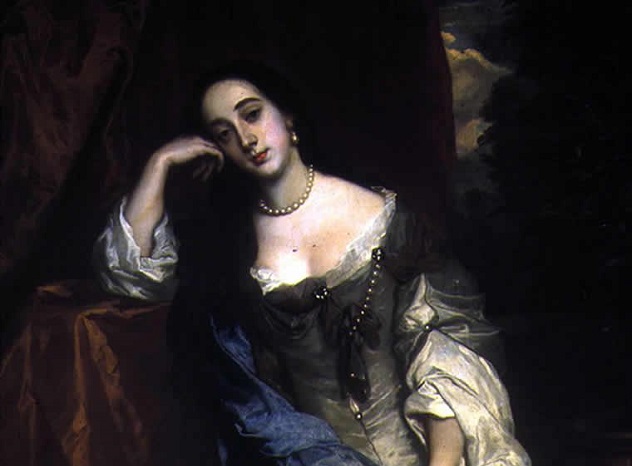
Of the 13 known mistresses of Charles II of England, Barbara Villiers is said to have been his favorite. The controversial and married Barbara—who had survived a bout of smallpox with her legendary beauty intact—was openly referred to in her day as a slut and a whore. Charles himself is said to have claimed that “she hath all the tricks of Ariten [a 17th century sex manual] that are to be practiced to give pleasure.”
Charles forced his queen, Catherine of Braganza, to accept Barbara as a lady of her bedchamber, even though Catherine did not want her. Barbara bore six children, five of whom Charles acknowledged, but he eventually moved on to other favorites. Undaunted, Barbara continued to have affairs, enduring a bigamy scandal when it was discovered that her second husband was already married.
Barbara remained on friendly terms with Charles for the rest of his life. On his deathbed, Charles reportedly asked his brother,the future James II, to be kind Barbara when he was gone. Barbara died at age 68, her once-famous beauty destroyed by dropsy.
5 Nell Gwynn
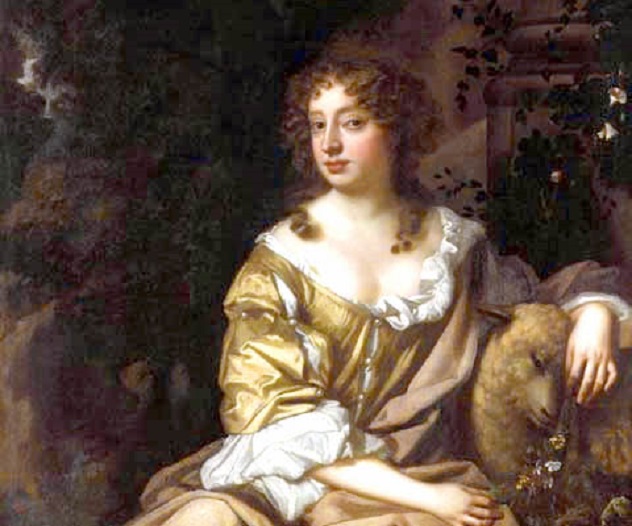
“Pray, good people, be civil—I am the Protestant whore.” –Nell Gwyn’s retort to an angry mob who had mistaken her coach for that of the king’s Catholic mistress.
The fatherless daughter of an alcoholic brothel-keeper, “pretty witty Nelly” may have been a child prostitute. She was “discovered” at age 15, selling oranges at the Drury Lane Theater, by the actor Charles Hart, who become her lover and trained her for the stage. Soon, Nell was London’s leading comedic actress.
Though Nell was illiterate and not a great beauty, her good temper and lack of pretension appealed to Londoners, who were in the mood for merriment after years of Puritan restrictions under Oliver Cromwell’s rule. More importantly to Charles, Nell had no interest in politics. Unlike his other mistresses, the down-to-earth Nell made him laugh and rarely asked for favors.
Nell bore the king two sons, one of whom died while a boy. Charles—who seems to have though a great deal about his mistresses as he lay dying—is famously said to have told his brother, “let not poor Nelly starve,” a request James II faithfully honored. Nell survived Charles by only two years, however, dying in her thirties after an illness which left one side of her body paralyzed.
4 Diane de Poitiers
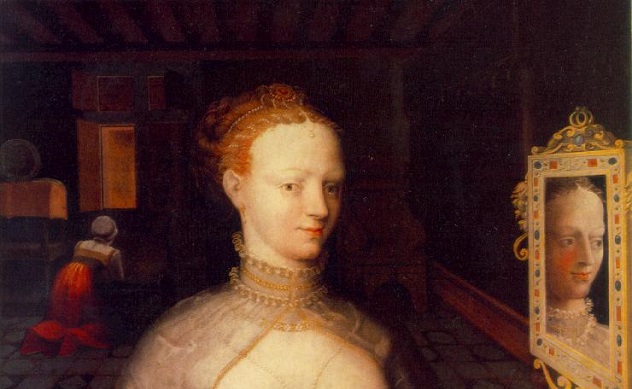
Diane de Poitiers was the ultimate Renaissance cougar. When she was 32, the French king hired her as a tutor for his 12-year-old son, the future Henry II. By the time Henry and Diane’s relationship became sexual six years later, Henry was married to the unattractive Cathérine de’ Medici, in whom he had little interest. In fact, it was only at Diane’s insistence that Henry even visited his wife’s bed to father royal children.
Diane reigned as queen in all but name, even writing official letters on Henry’s behalf, which she signed “HenriDiane.” Despite her intense jealousy, Catherine could do nothing until Henry died jousting in a tournament in 1559. She banished Diane from court, first appropriating the magnificent chateau of Chenonceau, which Henry had given Diane as a gift.
During the French Revolution, Diane’s tomb was opened and her remains thrown into a mass grave, where they remained for over 400 years. In 2008, French forensic experts found and examined Diane’s bones and discovered the secret of Diane’s beauty. Her remains revealed thinning hair and fragile bones, common symptoms of chronic gold intoxication. Renaissance elixirs of gold were compounded with mercury, which can cause anemia when ingested, a possible cause of Diane’s flawless, white skin. Diane, it seems, had literally been killing herself to retain the affections of a younger man.
3 Maria, the Countess Walewska

Maria was born in 1786 to an aristocratic family who had lost most of their wealth during the first partition of Poland. When she was 16, she reluctantly agreed to marry Count Walewska—a wealthy man in his 70s—to improve her family’s position.
At an 1806 New Year’s Eve party, Maria met Napoleon. The obsessive emperor wooed Maria with impassioned letters and jewels, which Maria returned, saying “he treats me like a prostitute.” Only after Napoleon suggested he might look more favorably on Poland’s plight if Maria was his lover did she submit to his advances.
When Maria became pregnant with his child, Napoleon was reportedly ecstatic. His wife, Josephine, had never borne him children, and Maria’s pregnancy proved it was not because Napoleon was incapable. He divorced the post-menopausal Josephine to wed Marie Louise, the daughter of the Austrian emperor. Shortly afterward, the newly monogamous Napoleon ended his affair with Maria.
Maria must have developed some affection for Napoleon in the end, because she offered to join him after he was exiled to St. Helena. Alas, Napoleon turned her down. Maria divorced Count Walewska and married one of Napoleon’s generals, but she died of kidney disease shortly after bearing him a son. She was just 31. Her body was returned to Poland, but her heart is interred in the famous Père Lachaise Cemetery in Paris.
2 Madame de Pompadour

Madame de Pompadour was born Jeanne-Antoinette Poisson in 1721. When she was nine, her mother took her to a fortune teller, who told them that one day Jeanne-Antoinette would reign over a king’s heart. Convinced her daughter was destined for greatness, Jeanne-Antoinette’s mother saw that she received the best education, including voice lessons from the star of the Paris opera.
At a masked ball, the recently widowed king Louis XV became smitten with Jeanne-Antoinette. He installed her in an apartment above his own at Versailles, where a secret stairway allowed him to visit her without being seen. There, she amassed a huge library of books, becoming a friend and patron of artists and writers, including Voltaire, Montesquieu, and Diderot.
Although Jeanne-Antoinette ceased to be Louis’s mistress after only five years, she remained at court as his friend and pimp-in-residence, interviewing young girls and introducing to him those who passed muster. She became heavily involved in politics and was blamed for France’s disastrous involvement in the Seven Years’ War. Still, the king remained loyal to her until she died of pulmonary failure at age 46. Madame de Pompadour is best remembered as the inspiration for the eponymous upswept hairstyle popular with ‘50s rockers and her portrayal in a 2006 episode of Doctor Who, “The Girl in the Fireplace.”
1 Lillie Langtry
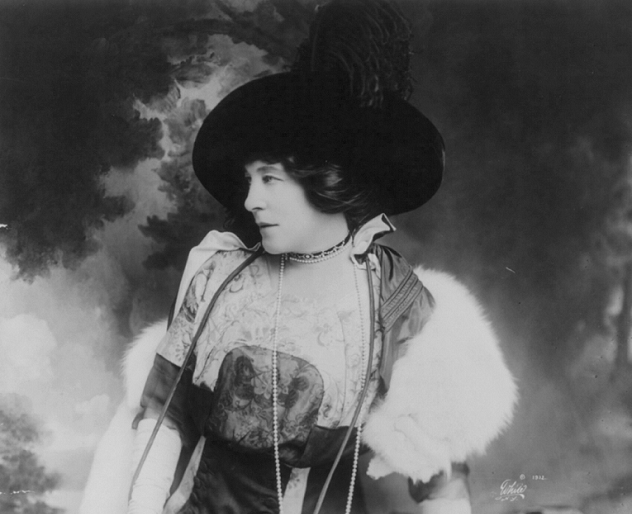
Lillie Langtry was as a 19th century actress whose endorsement on beauty products such as Pear’s soap guaranteed surefire sales. A muse to artists such as John Everett Millais, she became the lover of millionaires and royalty, including the very married Prince of Wales, i.e. the future Edward VII. “Bertie” was so besotted with Lillie that he even introduced her to his mother, Queen Victoria, but he ended the affair after Lillie put ice down his back at a party and refused to apologize.
When Lillie became pregnant with a child rumored to be that of Bertie’s cousin, Prince Louis of Battenberg, high society rejected her. Oscar Wilde–who write Lady Windermere’s Fan as an ode to Lillie—suggested that she turn to acting. She became an overnight success, achieving fame both at home and in America, where “Judge” Roy Bean changed the name of his Texas town to Langtry after merely seeing a picture of her.
After a string of millionaire boyfriends, Lillie married a man 19 years her junior and “retired” to Monaco, where she wrote a best-selling autobiography and became the first woman to break the bank at Monte Carlo. She died at age 76, shortly after a bout of bronchitis, and is buried in the churchyard of St. Saviour’s on the isle of Jersey.
Jackie Fuchs is a writer and attorney with a BA in linguistics from UCLA and a JD from Harvard. She played bass (as Jackie Fox) for the ‘70s all-girl rock band The Runaways with Joan Jett and Lita Ford.
Jackie is a former journalist and Huffington Post blogger, with an interest in word origins and medieval history. Her blog, Nothing Too Trivial (Interesting Things for Interested People), can be found at jackiefox1976.wordpress.com.








